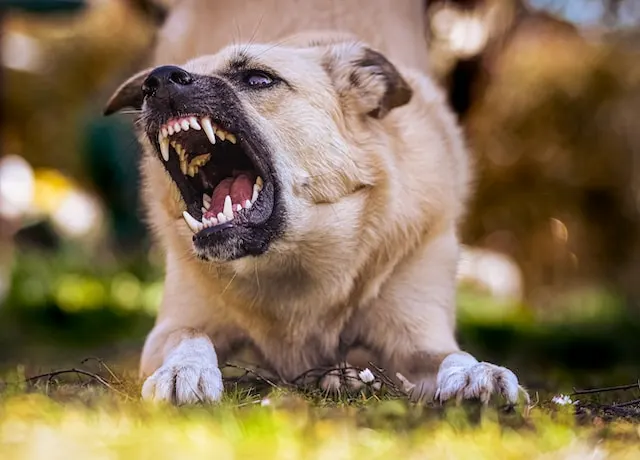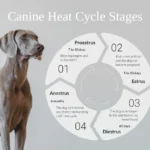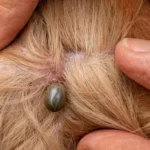Dogs, like humans, rely on their teeth for various functions, including eating, chewing, playing, and defending themselves. However, there are situations where dog teeth may need to be blunted for the well-being of the dog and the safety of others. It’s crucial to emphasize that blunting dog teeth should only be done using safe and humane methods to avoid causing harm or unnecessary pain to the dog.


Understanding the Anatomy of Dog Teeth
To comprehend why dog teeth may require blunting, it’s essential to have a basic understanding of their anatomy. Dog teeth consist of different types, each serving a specific purpose. Incisors are the small teeth in the front used for grasping and nibbling, while canines are the pointed teeth designed for tearing and holding. Premolars and molars are located towards the back of the mouth and are responsible for grinding and crushing food.
Reasons for Blunting Dog Teeth
There are common scenarios where blunting dog teeth may become necessary. Some dogs have a tendency to bite or nip aggressively, which can pose a safety risk to people or other animals. In such cases, blunting the dog’s teeth can help reduce the potential for injury or damage. Additionally, dogs with certain medical conditions or dental issues may require their teeth to be blunted to alleviate discomfort or prevent further damage.
Blunting dog teeth offers benefits not only for the safety of others but also for the dog and its owner. By blunting sharp teeth, the risk of accidental injuries or scratches during playtime or interaction with children is significantly reduced. It can also minimize the chances of damage to household items or furniture caused by excessive chewing. Furthermore, blunting the dog’s teeth can help prevent self-injury if the dog has a habit of excessively biting or licking itself.
Blunting dog teeth should always be approached with caution and consideration for the dog’s well-being. It is important to prioritize the use of safe and humane methods to ensure that the procedure does not cause unnecessary pain or distress to the dog. Consulting with a veterinarian or a professional dog trainer is highly recommended to receive guidance on the appropriate techniques and tools to use for blunting dog teeth.
Safe Methods for Blunting Dog Teeth
When it comes to blunting dog teeth, there are both professional and at-home options available. It’s important to prioritize the safety and well-being of the dog throughout the process. Seeking guidance from a veterinarian is highly recommended to ensure the proper and humane blunting of the dog’s teeth.
Professional Options: Veterinary Dental Procedures
One safe and effective option for blunting dog teeth is through veterinary dental procedures. Veterinarians have the knowledge, experience, and specialized tools to perform dental work on dogs. They can assess the dog’s teeth, determine if blunting is necessary, and carry out the procedure under controlled and safe conditions. Veterinary dental procedures not only ensure the well-being of the dog but also minimize the risks associated with at-home methods.
At-Home Options: Approved Dental Tools and Techniques
If the veterinarian determines that at-home blunting is suitable for the dog, there are approved dental tools and techniques that can be used. It’s important to note that these methods should only be employed after consulting with a veterinarian. Approved dental tools, such as dog-specific tooth files or dental grinders, can be used to gently and safely blunt the sharp edges of the dog’s teeth. Additionally, specific techniques, like filing or grinding, can be utilized under professional guidance to ensure a safe and effective outcome.
Importance of Seeking Guidance from a Veterinarian
Seeking guidance from a veterinarian is crucial when considering blunting dog teeth. A veterinarian can assess the dog’s dental health, determine if blunting is necessary, and provide specific instructions and recommendations based on the dog’s individual needs. They can also guide dog owners on the proper use of dental tools, techniques, and safety precautions. By involving a veterinarian in the process, dog owners can ensure that blunting is done safely, effectively, and without causing any harm to their furry friend.
Step-by-Step Guide for Blunting Dog Teeth at Home
If the veterinarian approves at-home blunting and provides guidance, the following step-by-step guide can be followed:
Preparing the Dog and Ensuring a Calm Environment: Choose a quiet and comfortable area where the dog can relax and not be distracted. Use positive reinforcement techniques to help the dog feel calm and secure before proceeding.
Proper Handling Techniques for Examining and Accessing the Dog’s Teeth: Gently lift the dog’s lips and examine its teeth. Be cautious and avoid any sudden movements that could startle or stress the dog.
Using the Appropriate Tools and Techniques to Blunt the Dog’s Teeth: If approved by the veterinarian, use dog-specific dental tools, such as tooth files or dental grinders, to carefully blunt the sharp edges of the dog’s teeth. Follow the veterinarian’s instructions on how to use the tools correctly and safely.
Safety Precautions and Potential Risks to Be Aware Of: Throughout the process, be mindful of the dog’s comfort and any signs of distress. Take breaks if needed and stop immediately if the dog becomes anxious or agitated. Be aware of the potential risks involved in at-home blunting and consult with a veterinarian if any concerns or complications arise.
Post-Blunting Care and Maintenance
After blunting the dog’s teeth, it’s important to provide proper care and maintenance to ensure the dog’s comfort and overall oral health. Here are some tips to follow:
Tips for Ensuring the Dog’s Comfort and Recovery After the Procedure
Provide a soft and comfortable resting area: Create a cozy spot where the dog can relax and recover after the procedure. Use a soft bed or blanket to make them feel comfortable.
Offer soft and easy-to-chew food: For a few days following the blunting procedure, provide the dog with soft food that doesn’t require excessive chewing. This will help prevent any discomfort or irritation to the teeth.
Monitor for any signs of discomfort or complications: Keep a close eye on the dog’s behavior and look for any signs of pain, swelling, or infection. If you notice any concerns, contact your veterinarian promptly.
Importance of Maintaining Regular Dental Hygiene Practices
Even after blunting the dog’s teeth, it’s crucial to maintain regular dental hygiene practices to ensure their oral health. This includes:
Regular brushing: Brush the dog’s teeth using a dog-specific toothbrush and toothpaste recommended by the veterinarian. Brushing helps remove plaque and prevents the buildup of tartar.
Professional dental cleanings: Schedule regular dental check-ups and professional cleanings with a veterinarian. They can assess the dog’s oral health, identify any potential issues, and provide appropriate treatment.
Dental-friendly treats and toys: Offer dental treats or toys that promote chewing and help keep the teeth clean. These can aid in preventing plaque and tartar buildup.
Monitoring the Dog’s Oral Health and Seeking Professional Advice When Needed
Regular monitoring of the dog’s oral health is essential. Keep an eye out for any changes in their teeth, gums, or overall oral condition. If you notice any abnormalities, such as excessive tartar buildup, bad breath, or changes in eating habits, consult with a veterinarian for professional advice and guidance.
Alternative Options to Consider for Dog’s Teeth Blunting
In some situations, blunting dog teeth may not be the most appropriate course of action. It’s essential to consider alternative methods for addressing specific dental issues. Consulting with a veterinarian can help determine the best approach for the dog’s individual needs. Here are a few alternative options to consider:
Dental scaling and polishing: If the dog has significant tartar buildup or dental issues that cannot be resolved through blunting alone, a professional dental scaling and polishing procedure may be necessary. This procedure removes plaque and tartar from the teeth, providing a clean and healthy oral environment.
Tooth extraction: In cases where a tooth is severely damaged, infected, or causing significant pain and discomfort, extraction may be required. Tooth extraction is performed by a veterinarian under anesthesia and can help alleviate pain and prevent further complications.
Dental crowns or bonding: For dogs with damaged or fractured teeth, dental crowns or bonding can be considered. These procedures help restore the tooth’s structure and protect it from further damage.
Orthodontic treatments: In some instances, orthodontic treatments may be necessary to correct dental malocclusions or misalignments. Braces or other orthodontic appliances can help improve the dog’s bite and prevent dental issues in the long run.
Consulting with a veterinarian is crucial when considering alternative options. They can assess the dog’s specific dental condition, provide expert advice, and recommend the most appropriate course of action.
Conclusion
In conclusion, blunting dog teeth can be a suitable option in certain situations where dental issues need to be addressed. However, it’s vital to prioritize safe and responsible practices when performing this procedure. Seeking professional guidance and veterinary assistance is strongly recommended to ensure the dog’s well-being and to address any underlying dental conditions effectively. Regular dental care and maintenance, along with monitoring the dog’s oral health, play a crucial role in maintaining their overall well-being. By following these guidelines, dog owners can help ensure their furry friends have healthy and comfortable teeth for a happy and fulfilling life.
Frequently Asked Questions about Blunting Dog Teeth
Is blunting dog teeth a common procedure?
Blunting dog teeth is not a common procedure and is typically only performed in specific situations where dental issues need to be addressed. It is important to consult with a veterinarian to determine if blunting is necessary for your dog.Can I blunt my dog’s teeth at home?
Blunting dog teeth should only be performed under the guidance of a veterinarian. They have the expertise and knowledge to safely and effectively perform the procedure using appropriate tools and techniques.Will blunting my dog’s teeth cause them pain?
When performed correctly, blunting dog teeth should not cause pain to the dog. However, it is essential to follow safe and humane methods and ensure the dog is comfortable throughout the process.Are there any risks or complications associated with blunting dog teeth?
Blunting dog teeth, when done by a professional veterinarian, is generally a safe procedure. However, there can be risks if it is not performed correctly or if the dog has underlying dental conditions. It is crucial to consult with a veterinarian to minimize any potential risks.How long does it take for a dog to recover after blunting their teeth?
The recovery time can vary depending on the individual dog and the extent of the dental work performed. Generally, dogs can recover within a few days to a week. It is important to provide appropriate post-procedure care and monitor the dog’s comfort during the recovery period.Are there any alternative options to consider instead of blunting dog teeth?
Yes, there are alternative options to address specific dental issues in dogs. These can include dental scaling and polishing, tooth extraction, dental crowns or bonding, and orthodontic treatments. Consulting with a veterinarian will help determine the best alternative approach for your dog’s dental needs.How often should I perform dental maintenance for my dog?
Regular dental maintenance is important to ensure your dog’s oral health. This includes daily brushing, providing dental-friendly toys and treats, and scheduling regular veterinary dental check-ups. Your veterinarian can provide guidance on the appropriate frequency of dental maintenance for your dog.What signs should I look for to indicate dental issues in my dog?
Signs of dental issues in dogs can include bad breath, difficulty eating or chewing, bleeding gums, loose teeth, excessive drooling, and pawing at the mouth. If you notice any of these signs, it is recommended to consult with a veterinarian for a dental examination.









